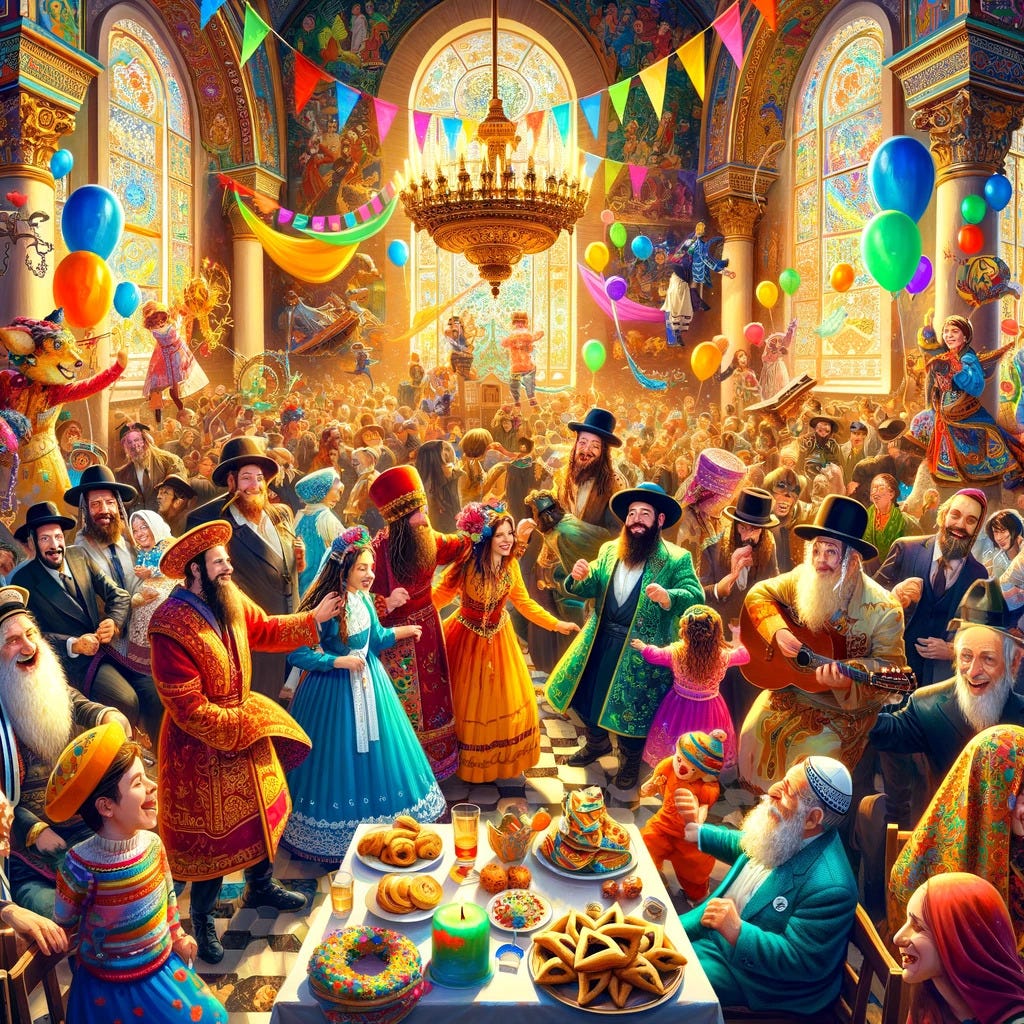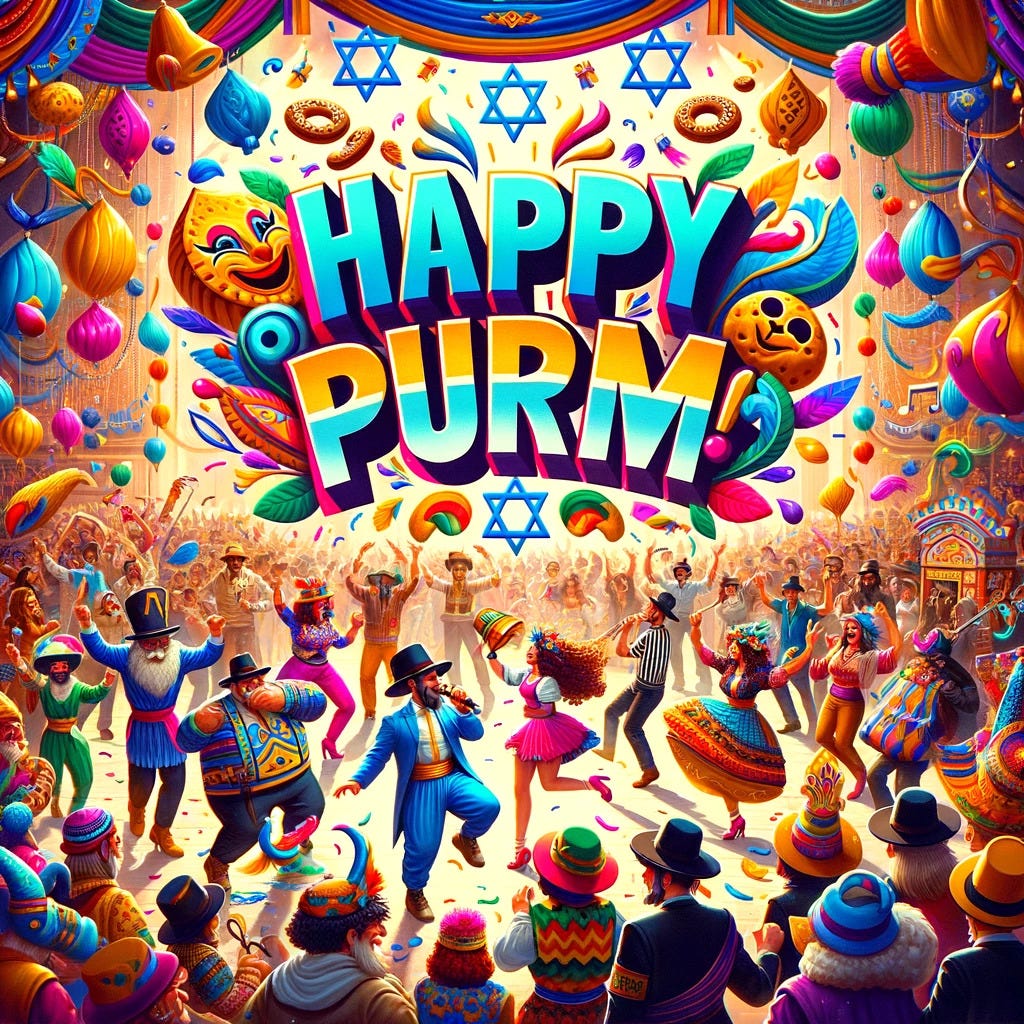The Jewish Holiday of Purim, March 23-27, 2024, or 14th of Adar
It's important to have the courage and tenacity to resist injustice, regardless of one's ethnic, racial, or religious identity.
“Jews survived all the defeats, expulsions, persecutions and pogroms, the centuries in which they were regarded as a pariah people, even the Holocaust itself, because they never gave up the faith that one day they would be free to live as Jews without fear.”-Rabbi Jonathan Saks.
“I keep my eyes always on the Lord. With him at my right hand, I will not be shaken.” -Psalm 16:8
Purim is a Jewish holiday that commemorates the saving of the Jewish people from Haman, an Achaemenid Persian Empire official who was planning to kill all the Jews, as recounted in the Book of Esther. This story is set in the Persian city of Shushan. It involves complex themes of survival, the capricious nature of fate, and the reversal of fortune, where the intended victims emerge victorious over their would-be oppressors.
The central narrative of Purim involves Esther, a Jewish woman who becomes queen of Persia, and her cousin Mordecai, who uncovers and thwarts Haman's plot to destroy the Jewish people. Haman's plan is overturned, and instead, it is he and his followers who meet a grim fate. The holiday is celebrated with readings of the Megillah, or the Book of Esther, feasting, sending gifts of food to friends (mishloach manot), giving charity to the poor (matanot la'evyonim), and wearing costumes and masks to symbolize the hidden aspects of the story, such as Esther's concealed Jewish identity and the hidden hand of divine intervention.
The parallels between the story of Purim and today's Israel-Iran issues are seen through the lens of historical enmity, the threat of annihilation, and the struggle for survival. In contemporary times, the relationship between Israel and Iran is marked by deep-seated tension and conflict, with Iran often portrayed in Israeli political discourse as a modern-day Haman due to its nuclear ambitions and hostile rhetoric towards the state of Israel. The narrative of Purim, with its themes of existential threat and deliverance, resonates with many in Israel as a symbol of resilience and the hope that current adversities can be overcome.
The celebration of Purim in this context can be seen as an affirmation of Jewish survival and sovereignty, especially relevant in the face of ongoing security challenges. It is also a time for reflecting on the broader themes of justice, the unpredictability of life, and the importance of community solidarity in the face of external threats. The holiday's customs, particularly the reading of the Megillah, serve as a reminder of the historical challenges faced by the Jewish people and the triumph over those who sought their harm, echoing the contemporary desire for peace and security in a turbulent region.
The notion that history repeats itself finds resonance in the comparison between Haman's intent to destroy the Jewish people in the story of Purim and Hitler's genocidal regime during the Holocaust. This parallel draws on the recurring themes of persecution and survival that have marked Jewish history. Both instances underscore a grim reality where entire communities faced existential threats solely based on their identity.
In the Purim narrative, Haman, angered by Mordecai's refusal to bow to him, plots to annihilate the Jews of the Persian Empire. This story is emblematic of the dangers of unchecked power and the vulnerability of minority communities to the whims of those who harbor deep-seated animosity toward them.
Fast forward to the 20th century, Adolf Hitler's regime systematically sought the eradication of the Jewish people, culminating in the Holocaust, one of the most horrific atrocities in human history. The Nazis' industrial-scale genocide led to the slaughter of six million Jews, along with countless others deemed undesirable by the regime.
The parallel between these two periods lies not only in the intent to destroy the Jewish people but also in the broader themes of bigotry, the abuse of power, and the capacity for evil to manifest in governance and society. These events serve as stark reminders of the consequences of hatred and intolerance.
However, the recurring theme of Jewish survival and resilience in the face of extermination attempts also highlights a powerful counter-narrative to persecution. Just as the Jewish community in Persia celebrated their deliverance from Haman's plot with the festival of Purim, the post-Holocaust era has seen the Jewish people rebuild their communities, affirm their cultural and religious identity, and establish the State of Israel as a sovereign homeland.
This historical reflection teaches the importance of vigilance against hate and the value of resilience. It underscores the need for societies to recognize the dignity and rights of all people, to remember the lessons of the past, and to work towards a future where such atrocities are never repeated.
Remember, this lesson in history is about All of us.






